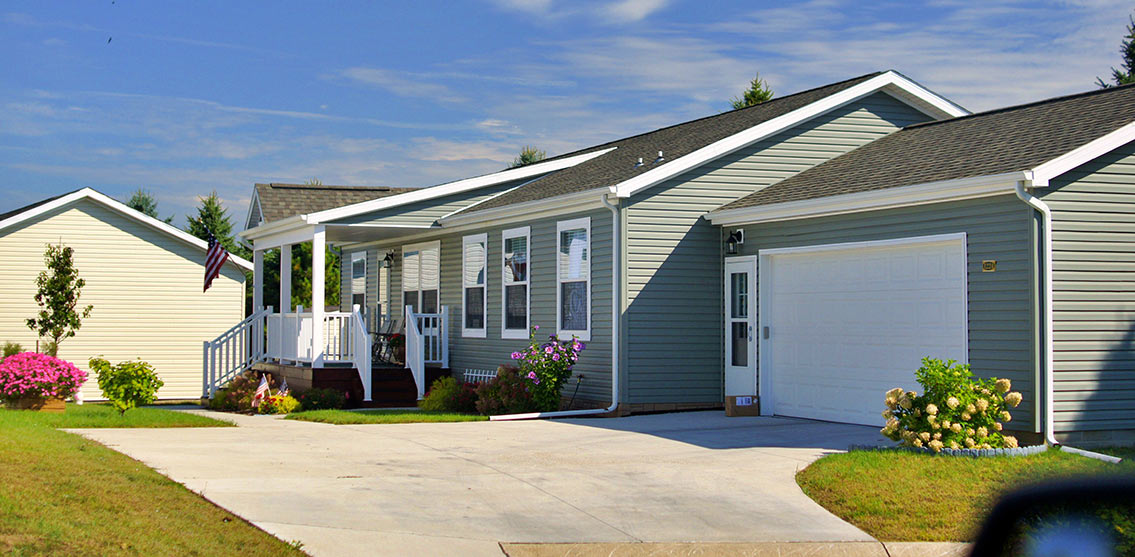Here are six prevalent manufactured housing myths and the facts that debunk them.

Myth
1
"They're the same as tiny homes, trailers, and mobile homes."
- It's all about the date. Technically, the terms "trailer" and "mobile home" apply to mobile dwellings built prior to June 15, 1976. They're typically titled as personal property and are licensed by a state's Department of Motor Vehicles (DMV). They're built on wheels, that can be pulled by a vehicle.
- Manufactured homes are not trailers. They’re built in a factory and must meet or exceed the Manufactured Home Construction and Safety Standards Act of 1974 (HUD Code.) They’re secured on a permanent, nonremovable steel frame (chassis) and can be titled as real or personal property.
- Tiny homes are neither a manufactured or mobile home. Typically sized between 100-400 square feet, they must be built to the DMV/Recreational Vehicle code(s) and pass a licensing inspection. Tiny homes may be on wheels/ mobile, but it’s not a requirement.
Myth
2
"They're unattractive and have limited design options."
- Manufactured homes feature modern, energy efficient, high-quality design options and custom home features comparable to site-built homes. Floor plans range from basic to elaborate, with vaulted or tray ceilings; fully-equipped, state of-the-art kitchens; walk-in closets; and luxurious bathrooms. Exterior upgrade options include covered porches, higher roof incline, decks and garages.
Myth
3
"They're poorly constructed and unsafe."
- Built entirely in a factory under controlled conditions, with state-of-the-art assembly line techniques and all building trades represented.
- Constructed with 20 to 30 percent more materials than site-built (to withstand transport from factory to property), making them a strong and resilient structure.
- All aspects of the construction process are quality controlled and inspected per HUD’s standards for design and construction, strength and durability, transportability, fire resistance, heating, plumbing, air-conditioning, thermal and electrical systems and overall home quality.
Myth
4
"They're more vulnerable to storm, hurricane and tornado damage."
- Having the HUD code seal of approval ensures that a manufactured home meets regional standards for roof load, wind resistance, thermal efficiency, safety and durability. HUD revised this building code in the early 1990’s to improve the wind resistance of manufactured homes in areas prone to hurricane-force winds.
Manufactured Housing Institute - These standards were tested in Florida during the 2004 hurricane season. Not one manufactured home built and installed after 1994 was destroyed by hurricane force winds. Proper installation and anchoring of the home is a key element in how a manufactured home will perform in severe weather situations. In 2017, when hurricane Irma hit Florida, a majority of manufactured homes were battered but largely intact, just like the site-built homes.
New York Times, September 14, 2017
Myth
5
"You're confined to living in a trailer park."
- You can install your manufactured home on vacant land that you own or lease land or in a manufactured housing community (MHC). Many MHCs offer security, amenities, neighbors and a sense of community. Cities are selecting manufactured homes for infill on vacant and blighted homesites.
Myth
6
"They’re so much cheaper because they’re made with cheap materials."
- Manufactured homes are made with the same standard building materials as site-built homes. These homes are more affordable because of efficiencies in the factory-building process and not because of inferior materials. Like other assembly line operations, manufactured homes benefit from purchasing large quantities of materials, products and appliances. Manufactured home builders can negotiate substantial savings on many components used in building a home and pass them directly to the homebuyer.
Source: Freddie Mac Publication Number 1062




